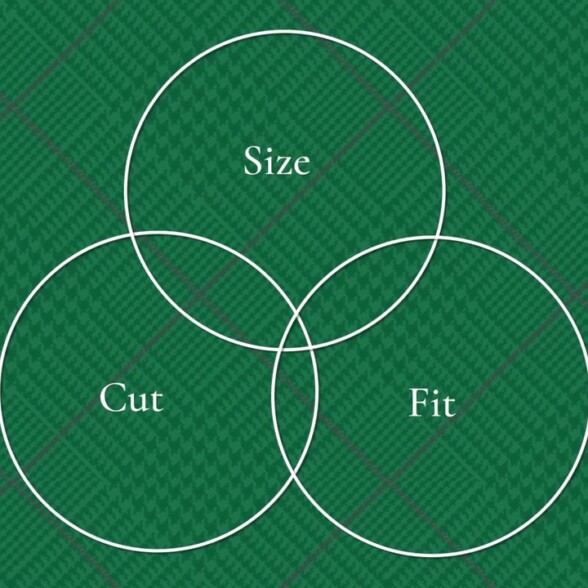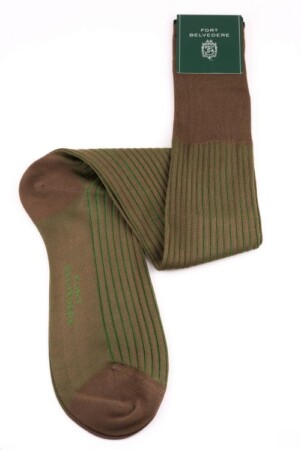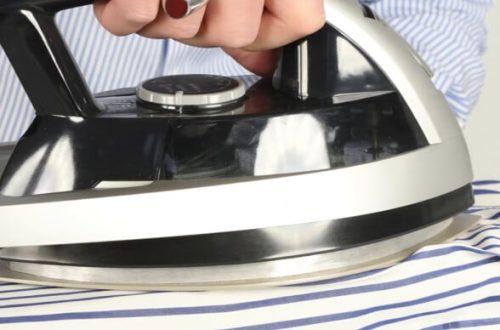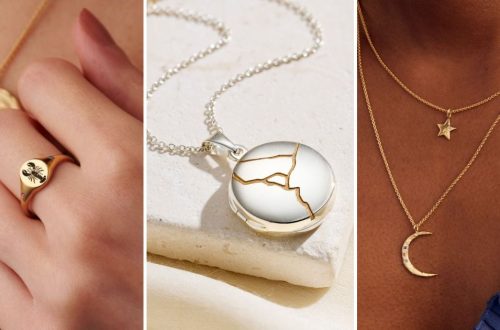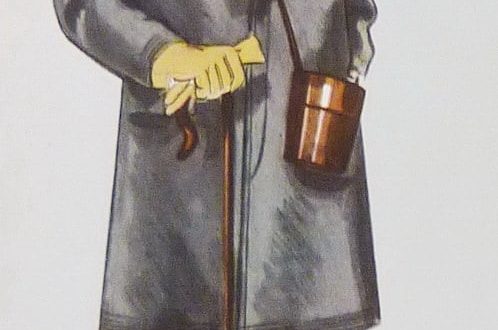The words “cut,” “size,” and “fit” are all thrown around a lot when it comes to clothing, but they don’t mean the same thing. We’ll help you to understand the differences and why they matter.
No One Knows How to Use These Terms!
Retailers are often guilty of using the words “cut” and “fit” in particular interchangeably—such as “slim fit,” “straight cut,” and so on. This, though, can create a lot of confusion. It’s an honest mistake and one that we’ve probably even made a number of times in our past guides.

Cut, size, and fit have
Overlapping Meanings
The reality is that fit, size, and cut exist in a triple Venn diagram. That is to say, there’s a degree of overlap between all three terms, but each one has its own unique elements.
Cut, Size, and Fit: Basic Terms
The cut of a garment refers to the overall shape or silhouette that it provides when worn. The size of a garment is typically reserved for ready-to-wear clothing and is meant to help you determine which size corresponds best to the proportions of your body.
RTW, MTM, & Bespoke – Terminology Explained
There are, of course, multiple scales for size, with the simplest being small, medium, large, and things with more precision like 38, 40, 42 for jackets, and so on. Meanwhile, bespoke clothing usually won’t be labeled with individual sizes as it’s designed to be made for your individual body, and made-to-measure and made-to-order clothing exist in a gray area in the middle, where a predetermined pattern is altered based on your body’s dimensions.

Finally, the fit of a garment is the cumulative result of the relationship between the cut and size of a garment and your own body proportion. In other words, if a garment’s cut and size flatter you, then it fits you well.
Cut Defines Silhouette
Moving on, we’ll be using a suit as our natural north as we dig deeper. This is because, unlike simpler garments like a T-shirt, a suit generally requires a bit of sculpting through tailoring and, thus, can be used to illustrate the differences between cut, size, and fit.
Drilling down then, we’ll start with a cut, which defines the silhouette. You’ve likely heard about different tailoring houses having their own signature cut or house cut. This is often what fans of classic style get most excited about if they happen to have a favorite tailoring house.
For example, Anderson & Sheppard are well known for their drape cut, whereas Huntsman is known for a military cut. Now, both of these tailors exist within the more general British style, but each of them does have nuances with their unique cuts.


This is where you, as a client, make a decision on a tailoring house before you’ve even started a piece because you have to like the overall style of the tailoring house, and that generally comes down to cut.
Nowadays, this isn’t just related to bespoke outlets either, as ready-to-wear and made-to-measure clothing brands are increasingly focusing on a distinct cut for their main lines.
To illustrate, let’s compare SuitSupply and Oliver Brown.
SuitSupply has an Italian influence with its garments being cut closer to the body, with high button stances, shorter jacket, and little to nopadding.

Oliver Brown’s garments are cut within the British style with military influences, like structured shoulders, gently nipped jacket waists, and longer closed quarters at the front of the jacket.

All of this makes shopping within a certain brand easier as you can take a look at the cut of the finished garments and decide if that cut is one that you like before making a purchase or starting a commission.
Assess Cut Like an Expert
But, if you’d like to go further, here are some key questions you can ask in order to better assess the cut of a jacket and trousers.
Starting with the jacket’s shoulders:
- Where does the shoulder seam sit?
- Is it a straight line from the neck to the top of the shoulder?
- Does the seam slant forward or backward?
- This is how the jacket has been cut, and it can’t be altered easily after the fact.
What about the sleeve head?
- Does it sit high or low under the armpit?
- Does the top of the sleeve rest on the top of your shoulder, up over it toward your neck, or does it sit just off the shoulder?
- A high armhole could theoretically be cut into a lower one, but a lower armhole can’t be made higher. The material has already been cut away.

For trouser legs:
- Which are best viewed from the side?
- What does the shape look like?
- Does it start wide at the hip and taper to the ankle?
- Perhaps a straight line from the hips to the ankle?
- Or maybe even bell bottoms?
- These might be a dated look, but they are one of the best examples of the difference between cut and fit in trousers. In this case, the cut can refer to the wide-flared opening at the bottom of the trouser leg, regardless of how that pair of trousers might fit you.

Size: One of Style’s Biggest Challenges
As you’ve likely experienced, finding the right size when shopping for clothing can be a chore. This is mainly because there’s no standardized worldwide system to label ready-to-wear clothing with a distinct size prior to sale.

Clothing sizes are
Not Universal
Even though you may generally take something like a 40 chest size in a jacket and a 34 trouser waistband size, these sizes can vary. They’ll depend not just on corresponding body measurements but also on where in the world the garment originated from, and they can vary from brand to brand. Some brands may run comparatively larger or smaller than others.
So-called “vanity sizing” exists to flatter you and lull you into a false sense of security when shopping. So, while clothing sizes are designed to help you select the garment that is closest in size to your own body, there’s no guarantee that that garment is going to fit you. This is because sizes are set by manufacturers who don’t know you personally and want to make as much money as they can from as few possible pieces of production.
This isn’t the company’s being nefarious, by the way. It’s simply good business sense. If suit jackets are produced from a size 36 to a size 50, that’s eight different jackets that have to be produced jumping up in number between sizes in twos. If you were to add in all of the odd-numbered sizes in between, that’s now 15 different sizes for just one jacket, and this doesn’t even account for the natural asymmetries that every person has.

Think of one shoulder naturally sitting lower than the other, one arm being longer, and so on. If manufacturers had to account for all of this, this would lead to a lot of stock for every single product and not as much comparable profit.
This is why most manufacturers typically opt for even numbered size increments so that you can find a garment that is sized close enough to your own body proportions and then get tailoring to go the rest of the way. Almost all garments will benefit from some tailoring, but you can get lucky with certain brands fitting you well off-the-rack.

You can shop OTr
Not needing any alterations!
For instance, Jack has found that this particular jacket from SuitSupply fits him reasonably well with no alterations in a size 34. There might be areas he’d like to tweak, but he already gets compliments on the jacket as is because it represents a good harmony between cut, size, and fit for him.
Fit Define Comfort
Next, then, let’s cover fit, which defines comfort. If cut is all about the shape of a garment and size tells you about its dimensions, then fit is all about how comfortably that garment will sit on your personal frame. Ultimately, it doesn’t matter how good the jacket’s silhouette looks if that jacket is bunching, sagging, too big, or too small on you.
In the world of bespoke and made-to-measure tailoring, in particular, cut, size, and fit are generally going to get blended into one experience when you’re getting measured up. Here, your personal measurements will inform how the garment is cut and sewn together to best fit your own personal size.


In essence, the silhouette of the garment will be influenced by your body measurements before the garment is made. After all, the garment is being made to fit your own proportions within the style or cut of the tailoring house.
When it comes to ready-to-wear clothing, though, there isn’t as much wiggle room to ensure a perfect fit off the track. After all, you’ll be limited by predetermined sizes, and an alterations tailor won’t have full freedom to change things as they’ll be limited by the amount of fabric that exists.
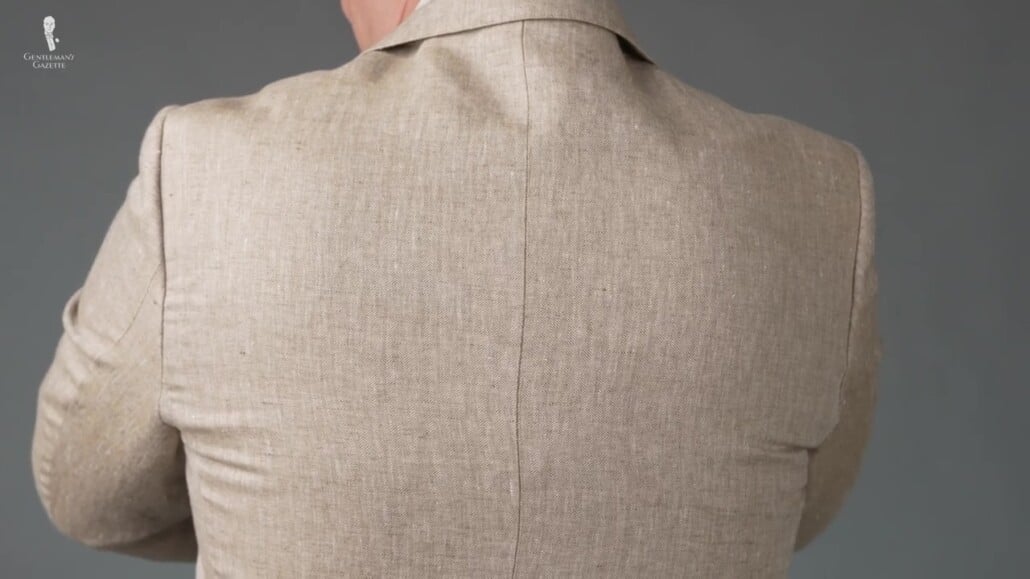
Of course, this is also true for vintage or finished bespoke garments that you’ve acquired. Still, most ready-to-wear clothes can become a well-fitting addition to your wardrobe, and for more tips, check out our guide on What A Tailor Can and Can’t Do.
Outfit Rundown

Today, I’m wearing a navy blue suit from Suit Supply in the house cut that they refer to as “The Washington. Within Suit Supply’s general Italian style, this is a relatively slim and tapered cut. Given that this suit was made-to-measure for me, we started from a general house cut and then made alterations on a pre-existing pattern to better fit my body.
By the way, you can learn more about the overall Suit Supply experience and whether or not we think it’s worth it another post.
Suitsupply Suits Review
Overall, this is a conservatively styled suit with a bit of character coming from its peaked lapels and the slight texture in its bird’s eye weave.
My shirt from Charles Tyrwhitt, which also happens to be made-to-order, is in plain light blue with a classically styled collar and French cuffs, into which I have inserted some vintage gold cufflinks. My tie and pocket square are also vintage—featuring tones of green, pink, orange, blue, and red.
My shoes are dark brown, brogued, Adelaide-styled Oxfords from the Swedish brand Skolyx, and rounding out my outfit today are my two-toned, shadow-striped socks in green and brown and my edelweiss boutonniere—both of which are from our own brand, Fort Belvedere.
For a fragrance today, I’ve gone for Vetiver from Guerlain, which is a favorite of mine and also has some green accents on the bottle. For the socks and boutonniere I’m wearing in today’s video—as well as a wide array of other classic men’s accessories, corduroy trousers, and fragrances from the Roberto Ugolini collection—you can take a look at the Fort Belvedere shop.
Size & Fit are Easier to Alter; Cut is More Difficult
Next, let’s discuss alterations in a bit more depth as size and fit are easier to alter but cut is more difficult. When it comes to alterations, most requests fall in line with generally simple operations—reducing or expanding side seams slightly, shortening or lengthening the jacket sleeves a bit, taking in or letting out the trouser waist, and so on. Essentially, alterations tailoring is about performing slight adjustments to a garment in order to make it fit your own size and stature better.
For example, let’s say that you come across a jacket that you love the look of with a single-breasted closure, but it’s a size 40, and your chest measures 37 inches around.

Alterations depend on the
Fabric available
A skilled tailor could alter the jacket by taking it in at the side seams; thereby reducing the size while improving the fit and preserving the cut.
On the other hand, though, the tailor wouldn’t be able to raise the armholes or change the closure to a double-breasted configuration without adding additional fabric. At that point, you’d essentially be making a whole new jacket and would be better off just starting from scratch.
Let’s break from our example of a suit briefly to look at a dress shirt that’s two sizes too big. The side seams can be reduced by an inch or so on each side, preserving the cut and silhouette while improving the fit. To alter the sleeve length, cuffs could be removed, the excess length taken away, and then the cuffs sewn back on.
But, the collar and cuffs themselves are examples of cuts where the silhouette of these components can’t really be altered. So, if you want to change a spread collar to a point collar or barrel cuffs to double cuffs, you’ll have to make a new collar and cuffs.
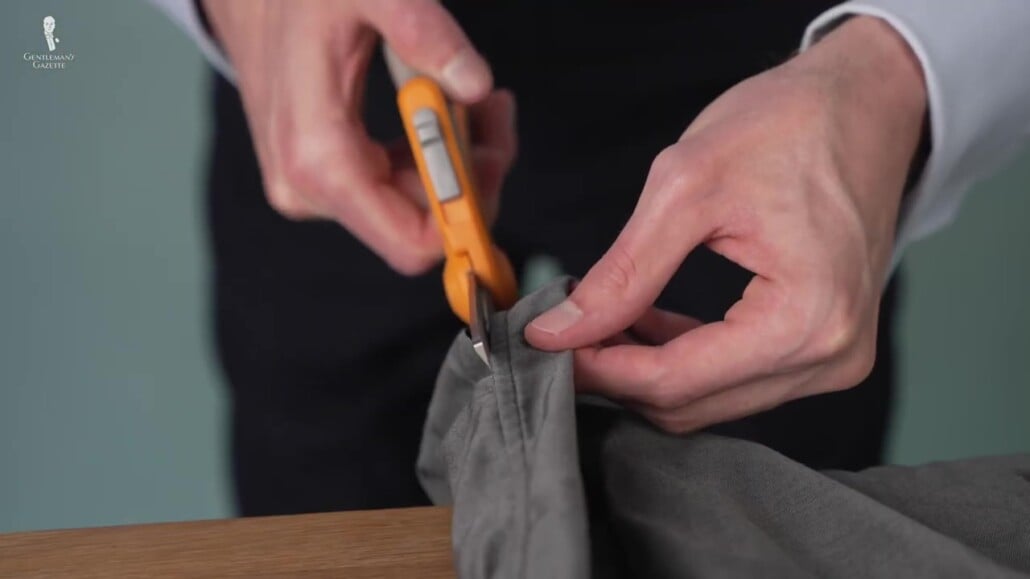

Even if you don’t want a different style, altering the size of a collar or cuffs can be difficult. A cuff or collar made smaller would pucker unattractively when sewn back onto the body of the shirt.
So, when considering cut, size, and fit together, remember that it’s all about balance. As the saying goes:
The perfect is often the enemy of the good.
Even going to a high-end bespoke tailor won’t necessarily mean that you’ll achieve a perfect harmony of cut, size, and fit—at least until you’ve made a few garments with said tailor. So, don’t be afraid to try different things.
Perhaps you’ve seen a pair of pants that you like in a classic cut, but the size is off by a couple of inches. Can you get it altered to fit? If the answer is yes, then you’ll be able to achieve a more harmonious balance of cut, size, and fit. This will result in a comfortable garment that looks great on you and feels fantastic to wear.

Conclusion
Now that you understand the differences between these three terms, you should be able to find clothes in your size with a flattering cut that fits you well.
Do you have any other insights about the differences between cut, size, and fit? Let us know in the comments below.
FAQ
What is the difference between cut & fit?
Cut are the design elements behind a certain garment that can’t be altered easily, while fit is how those elements are sized to fit onto your body.
What is the cut of a garment?
Cut makes up the design elements that make up the identity of a garment. They can’t be easily altered without throwing their established proportions.
How do you know if clothes fit?
Clothes fit when they are both proportionate to your frame and feel comfortable to wear
What does “form-fitting cut” mean?
A form-fitting cut is a silhouette that fits closely to the body and doesn’t use drape to create the illusion of structure.
What does cut mean in clothing?
Cut is the design feature that makes up the ideal proportions for a garment and can’t easily be altered.
What is a well-fitted garment?
A well-fitting garment is one in which both the fit and cut of a garment are flattering to the wearer.
How do I know if clothes fit?
You know something fits when it flatters your proportions in a way that is in line with the golden ratio and also makes you feel comfortable moving around.
